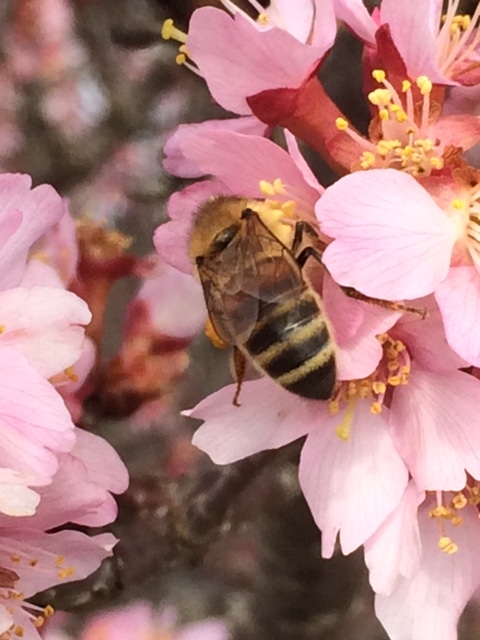
Scientists at the University of Tennessee Institute of Agriculture published results of the study in a recent issue of the Journal of Economic Entomology, titled the "Agricultural Landscape and Pesticide Effects on Honey Bee Biological Traits." While not all news is good news according to the results of the study, some interesting discoveries were made.
May 9, 2017

It's no secret that pesticides can cause harm to honey bee colonies, but a new study from University of Tennessee researchers has found that under the right conditions, the overall health of honey bee colonies can benefit as a result of row crop production.
The number of honey bee colonies in the United States has declined by 45 percent over the past 60 years, not just because of agrochemical exposure, but also a result of various pathogens, parasites, and other factors such as changing farm demographics. The new study illustrates that while some aspects of farming represent a high risk for honey bee colonies, a determination that row crop farming can contribute to the well being of bee colonies is encouraging news to the agricultural industry.
Scientists at the University of Tennessee Institute of Agriculture published results of the study in a recent issue of the Journal of Economic Entomology, titled the "Agricultural Landscape and Pesticide Effects on Honey Bee Biological Traits." While not all news is good news according to the results of the study, some interesting discoveries were made.
With little argument, results of the study concede that pesticides are thought to be a principal factor causing honey bee decline, in addition to damages caused by the parasitic varroa mite. Many insecticides are toxic to bees, even at very low doses, and they may cause significant disorders at sub lethal doses in colony dynamics and the division of labor of honey bee colonies by affecting honey bee behavior, orientation, communication, and return flights.
ENVIRONMENTAL FACTORS
In addition to harmful pesticides, however, the study indicates some environmental factors play a central role in colony losses, such as habitat loss or changes, poor nutrition, inadequate foraging flora, and the transportation stress induced by the excessive "transhumance of honey bee colonies to provide pollination services."
While pesticides are necessary for pest control in agriculture, increasing crop production and providing worldwide food security, care must be taken by farmers to minimize that damage through adequate control measures, a practice that row crop farmers have been making an effort to adopt in recent times. Those efforts are helping to reduce the negative aspect of pesticides, more precisely neonicotinoid class pesticides, and their capability of suppressing honey bee immune-competence that might lead to an impaired disease resistance capacity.
For the purposes of this study, a number of locations were utilized to test the effects of landscapes (urban versus agricultural) on colony health. Researchers measured three key elements of honey bee colony health—colony weight, brood production, and colony thermoregulation—in different landscapes and with different risks of pesticide exposure. Researchers then evaluated honey bee colony performance in replicated exposure groups in an effort to tease apart the relative effects of pesticides and environment on colony health.
The results indicated a number of factors. While additional external elements influenced colony weight and brood production, it was determined that hives in agricultural areas did exhibit better colony weight as a result of better forage opportunities. The cause of death among colonies varied depending on location, but it should be noted that pesticide exposure was accountable for pollinator death in colonies located near high production agricultural areas.
NUTRITION FACTOR
In conclusion, the study indicated honey bee colonies foraging in moderate and high production areas where row crop farming was practiced were clearly able to grow faster and to a larger size as a result of better access to sustainable nutrition sources than bees foraging in more urbanized areas. Better nutrition sources and nectar yields in farm areas helped to develop greater population size, which in turn enabled better colony thermoregulation.
The study further concludes that while non-farm areas may provide a less-toxic environment for honey bees, they may not provide sustainable foraging resources, leading to colony starvation. Thus, a trade-off appears to exist between increased food resources and the potential for exposure to pesticides in agricultural systems. Careful selection of pesticides and conscientious application of bee-toxic pesticides, however, should greatly reduce the risk of honey bee exposure and promote healthier hives under the right conditions.
Access the full article here.
You May Also Like



